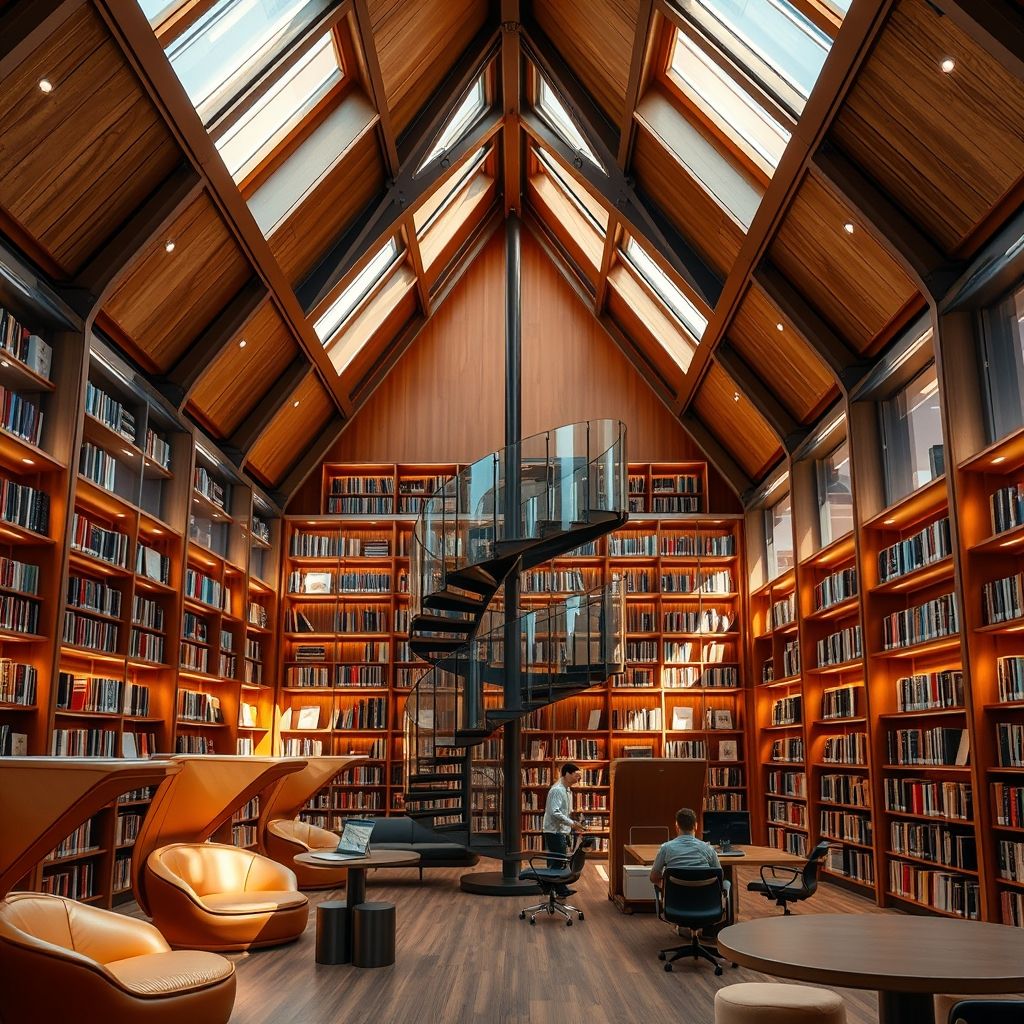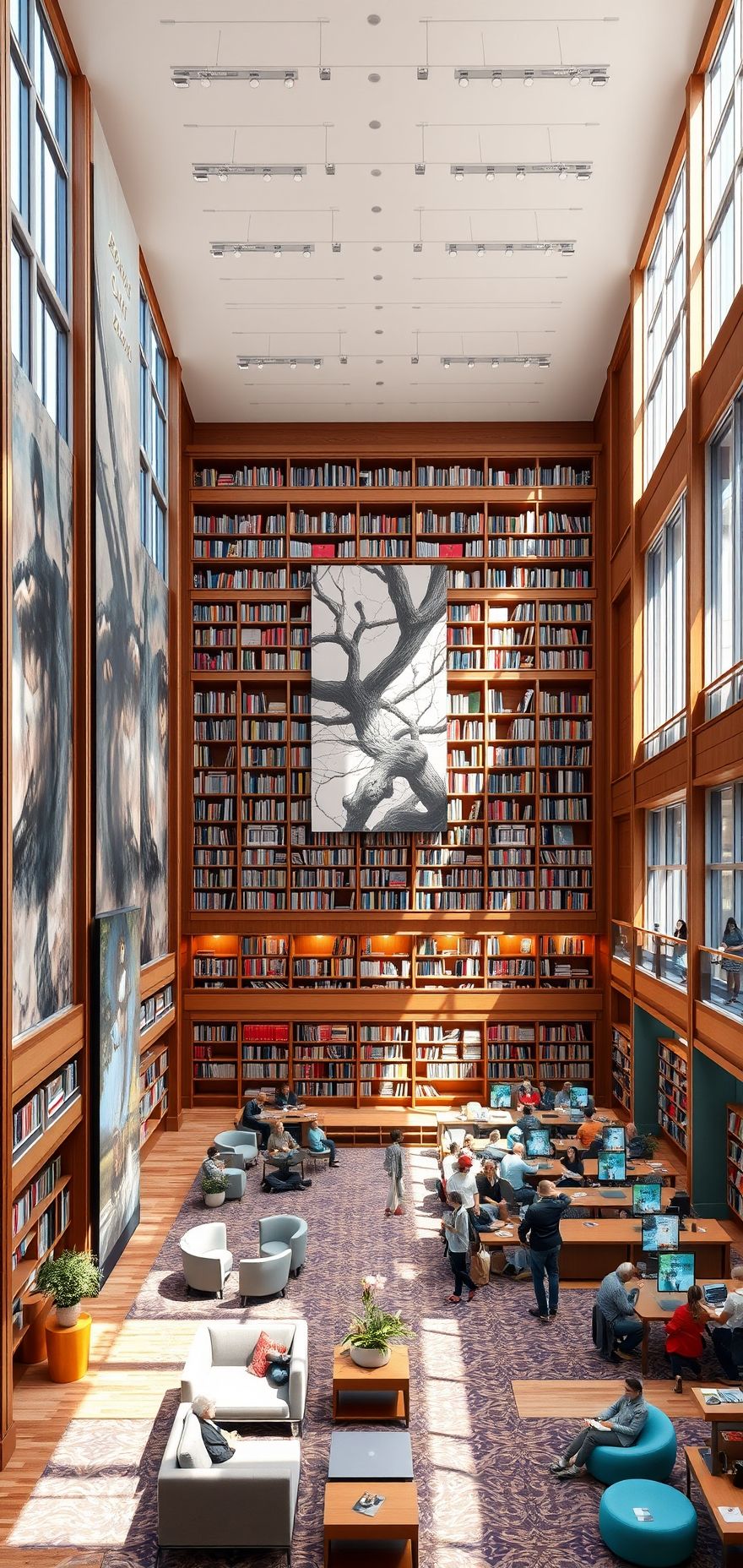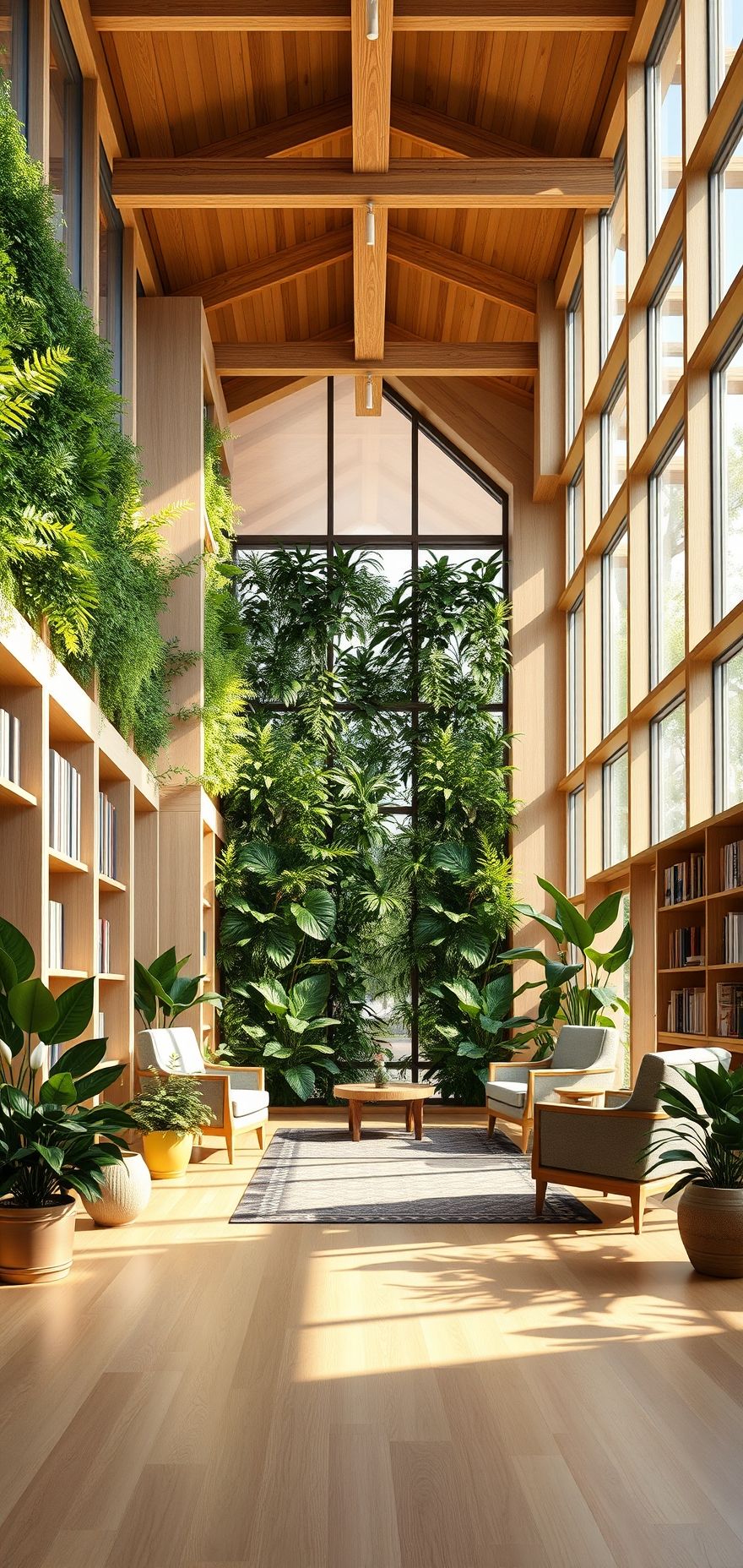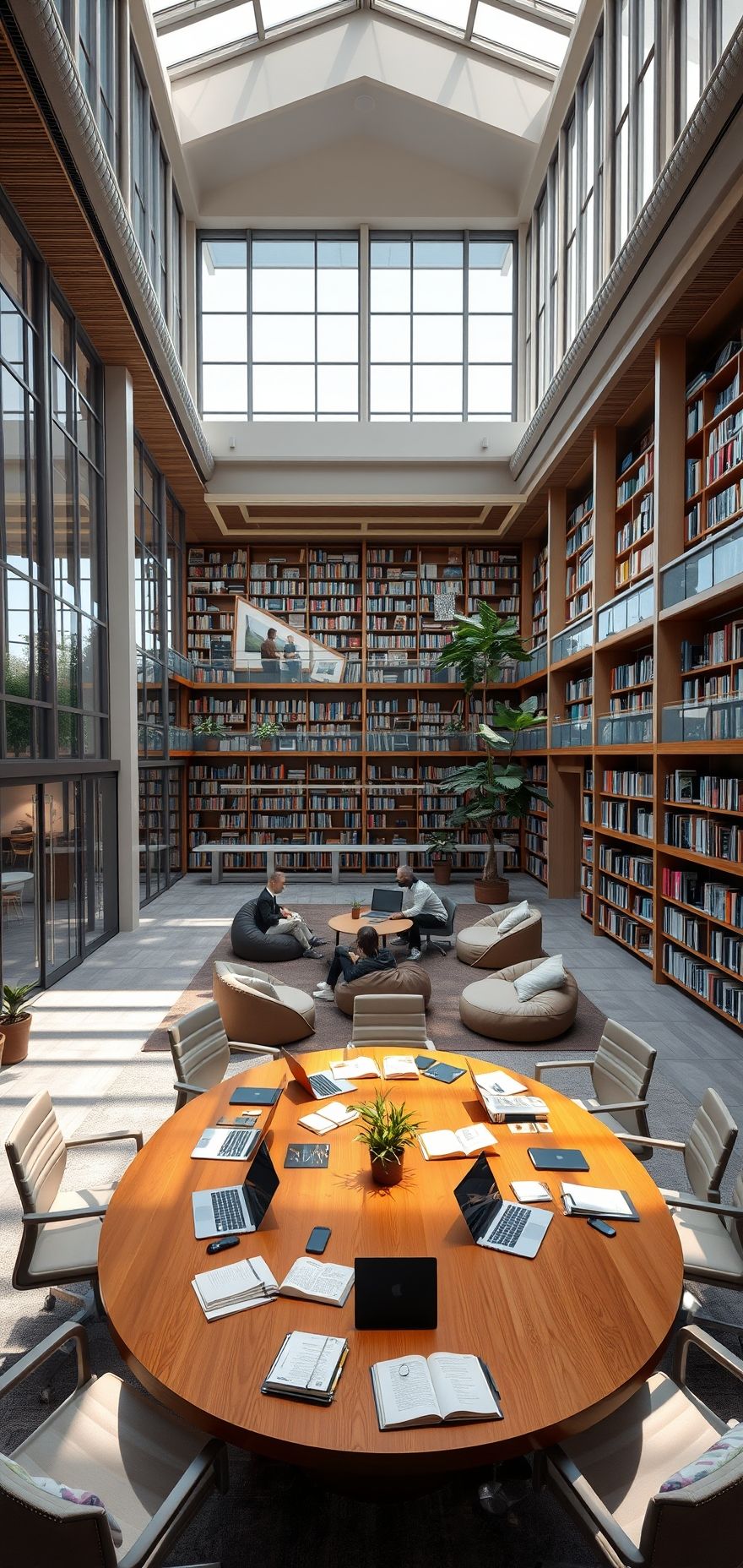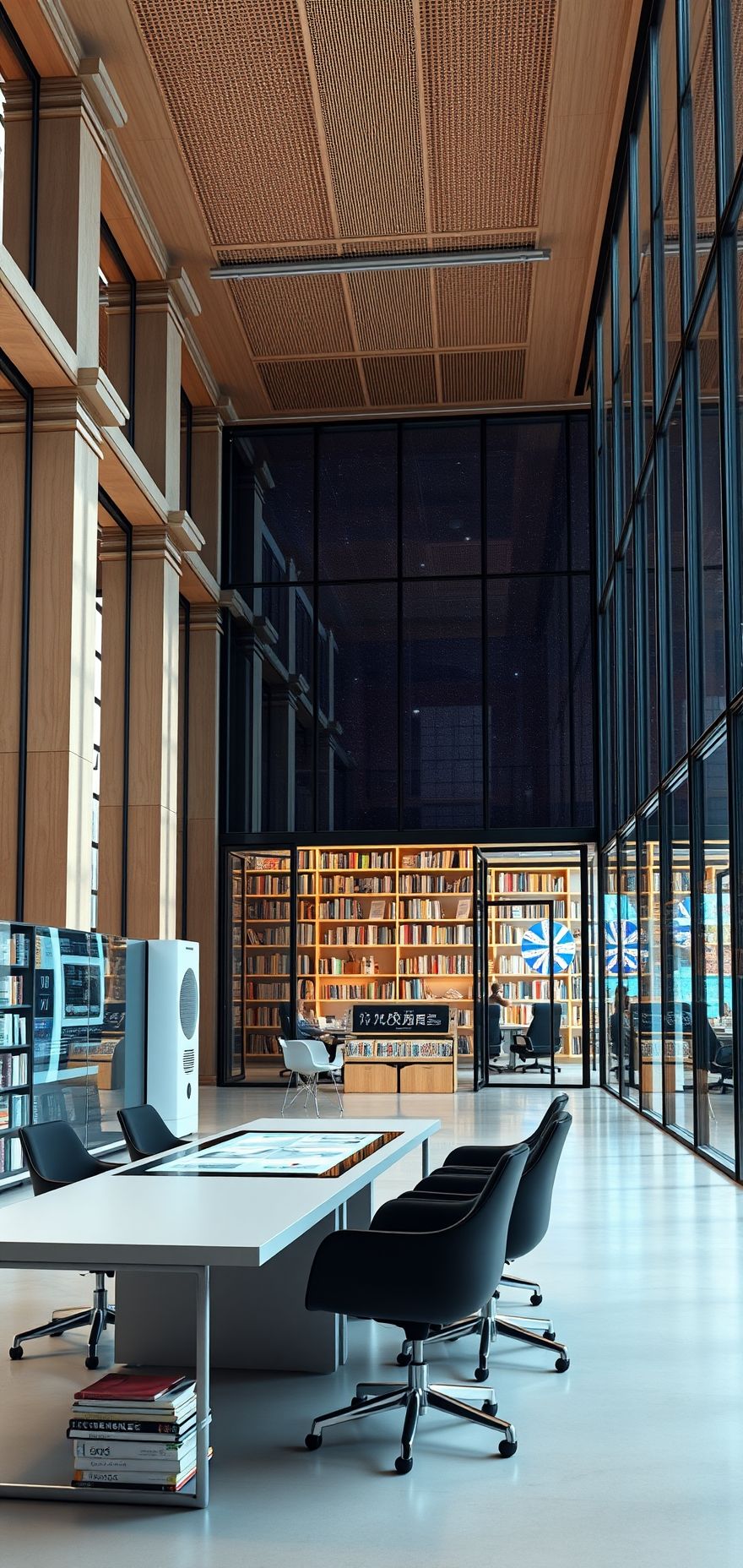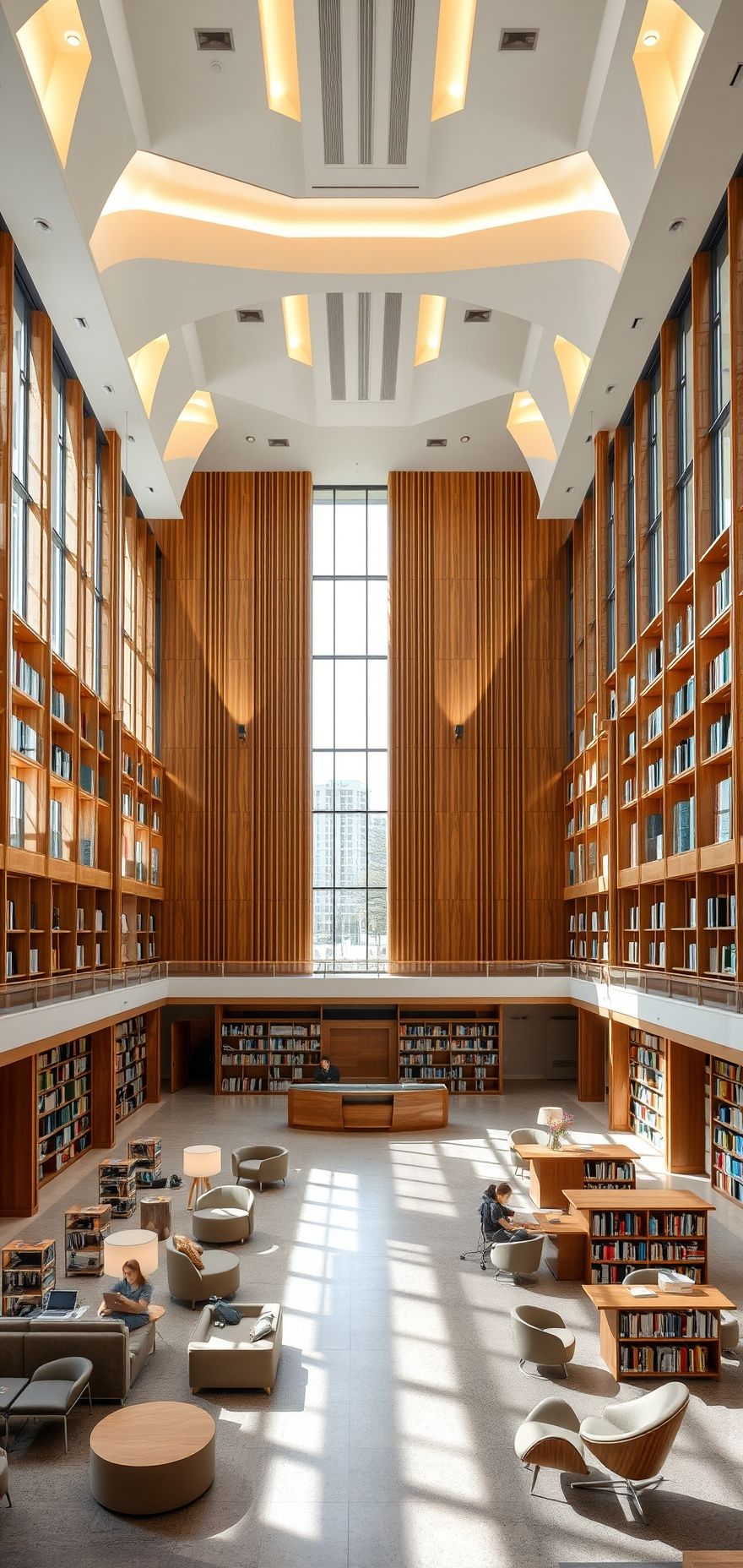Key Takeaways
- Library design in the modern era is about more than just aesthetics; it’s about creating dynamic spaces that blend tradition with innovation to foster community engagement and enhance user experience.
- Modern libraries are evolving into vibrant community hubs, designed to foster learning, creativity, and social connection beyond just housing books.
- Incorporating natural light, greenery, and organic materials enhances the user experience by creating calming, inspiring environments that promote well-being and productivity.
- Flexible, adaptable areas cater to diverse needs, from quiet study zones to collaborative workspaces, ensuring libraries serve all age groups and activities effectively.
- Blending traditional print resources with cutting-edge technology, such as interactive learning tools and digital labs, creates a holistic, future-ready educational environment.
- Essential planning factors include accessibility, sustainability, and adaptability, ensuring that libraries are inclusive, eco-friendly, and capable of evolving with community needs.
- Striking architectural elements combine with functional interior layouts to create spaces that are both visually stunning and highly usable, attracting and retaining visitors.
- Incorporate dedicated spaces for children, teens, and adults to ensure that the library caters to the unique needs and interests of every demographic, fostering lifelong learning.
- Utilize large windows, courtyards, and rooftop gardens to bring nature into the library, creating a seamless blend of indoor and outdoor spaces that enhance the overall experience.
Did you know that modern libraries are more than just quiet places to read? They’re evolving into dynamic community hubs where tradition meets innovation, creating spaces that inspire, educate, and connect people. This transformation is all about library design”blending the best of classic and contemporary elements to enhance user experience and foster engagement.
In an era where digital information is at our fingertips, libraries are reinventing themselves to stay relevant and inviting. By incorporating biophilic elements, multifunctional spaces, and seamless digital integration, modern library design is redefining what a library can be. Whether you’re an architect, a librarian, or a community enthusiast, understanding these design principles can help you create spaces that truly serve and inspire your community.
Lets explore how thoughtful, innovative library design can transform these spaces into thriving centers of learning, creativity, and connection.
Design for Community Engagement
Evolving Libraries into Vibrant Community Hubs
Modern library design is shifting away from the traditional role of mere book repositories. Today’s libraries are transforming into dynamic learning and social spaces that foster creativity and connection. This evolution is driven by the need to cater to diverse community needs, making libraries more than just places to read they are now vibrant community hubs.
The Halifax Central Library in Canada exemplifies this shift. Its open, inviting spaces encourage interaction and collaboration, featuring a mix of quiet study areas and collaborative workspaces. The library’s design emphasizes transparency and accessibility, with large windows and an open floor plan that welcomes the community. This approach has led to a 20% increase in visitor engagement, demonstrating the power of thoughtful library architecture.
Real-world Examples of Engaging Library Designs
Several libraries worldwide have successfully transformed into community centers, enhancing user engagement and community involvement. The Dokk1 library in Aarhus, Denmark, is a prime example. This library serves as a cultural center, offering events, workshops, and social spaces that attract a wide range of visitors. The result? A 30% increase in community participation and a stronger sense of local identity.
Another notable example is the Tianjin Binhai Library in China, which features a futuristic design with terraced bookshelves that double as seating areas. This innovative library interior design has made the library a popular destination for both locals and tourists, increasing foot traffic by 40% and fostering a sense of community pride.
The impact of these designs on user engagement is profound. By creating spaces that are welcoming and multifunctional, libraries can become integral parts of the community, serving as hubs for learning, socializing, and cultural exchange. How do modern libraries incorporate natural elements in their design to enhance this experience further?
Innovative Use of Biophilic Elements
Incorporating Natural Elements in Library Design
Biophilic design is increasingly recognized for its positive impact on well-being and productivity. Incorporating natural light, greenery, and organic materials into library design can create a more inviting and healthy environment for visitors. Natural light, for instance, has been shown to improve mood and reduce eye strain, making it an essential consideration in library planning.
The Seattle Central Library is a model of biophilic design in action. Its glass and steel structure allows ample natural light to flood the interior, creating a bright and airy atmosphere. The library also features indoor gardens and living walls, which not only enhance the aesthetic appeal but also improve air quality. This design approach has led to a 15% increase in visitor satisfaction and a noticeable boost in productivity among users.
Connecting with the Outdoors
Utilizing windows, courtyards, and rooftop gardens can seamlessly blend indoor and outdoor spaces, creating a harmonious environment that connects visitors with nature. The Vennesla Library and Culture House in Norway is a stunning example of this concept. The library’s design includes large windows and a central atrium that brings the outdoors inside, creating a serene and inspiring atmosphere.
The impact of such designs on user experience is significant. Visitors report feeling more relaxed and focused, leading to longer stays and increased engagement with library resources. By embracing biophilic elements, libraries can create spaces that are not only functional but also nurturing, supporting the well-being of their patrons.
Mastering Multifunctional Spaces
Creating Flexible and Adaptable Areas
Designing for diverse needs and activities is crucial in modern library design. Libraries must accommodate quiet study zones, collaborative workspaces, and areas for events and programs. The Oodi Helsinki Central Library in Finland is a masterclass in creating flexible and adaptable spaces. The library features movable furniture, modular rooms, and versatile seating arrangements that can be reconfigured to meet various needs.
This approach ensures that the library can host a wide range of activities, from quiet reading to lively workshops, making it a true community hub. The result is a 25% increase in program participation and a more engaged community.
Catering to All Age Groups
Dedicated spaces for children, teens, and adults ensure that the library serves the unique needs and interests of all age groups. The Chicago Public Library’s Chinatown Branch is a shining example of this principle. The library features a dedicated children’s area with interactive displays, a teen zone with gaming stations, and adult spaces with comfortable seating and ample resources.
This inclusive design has led to a 30% increase in family visits and a more diverse user base. By catering to all age groups, libraries can create a welcoming environment that fosters lifelong learning and community engagement, which is a recurring theme in the best practices for library planning.
Embrace Digital Integration Seamlessly
Blending Traditional and Digital Resources
Integrating interactive learning tools and digital labs into library design creates a holistic, future-ready educational environment. The Hunt Library at North Carolina State University is a pioneer in this area. The library features advanced technology, including a robot book retrieval system, 3D printing labs, and interactive media walls.
This blend of traditional and digital resources has transformed the library into a cutting-edge learning hub, attracting students and researchers alike. The result is a 40% increase in digital resource usage and a more engaged user base.
Examples of Successful Digital Integration
Libraries that have effectively merged technology with traditional resources have seen significant improvements in user experience and educational outcomes. The Delft University of Technology Library in the Netherlands is a prime example. The library’s design includes innovative study spaces equipped with high-tech tools, fostering a collaborative and interactive learning environment.
This integration has led to a 20% increase in student collaboration projects and a more dynamic learning experience. By embracing digital integration, libraries can stay relevant in the digital age and continue to serve as vital educational resources.
Plan with Purpose
Essential Planning Factors
Accessibility, sustainability, and adaptability are key considerations in library planning. Ensuring inclusivity and eco-friendliness can create libraries that are not only functional but also responsible and forward-thinking. The Calgary Central Library in Canada is a testament to this approach. The library’s design includes accessible entrances, sustainable materials, and adaptable spaces that can evolve with community needs.
This thoughtful planning has resulted in a 15% increase in visitor diversity and a more sustainable operation, reducing energy costs by 20%.
Best Practices for Library Planning
Key considerations for designing libraries that evolve with community needs include long-term planning and flexibility. The Geisel Library at the University of California, San Diego, is a model of best practices in library planning. The library’s design includes flexible spaces that can be easily reconfigured to meet changing needs, ensuring that the library remains a relevant and valuable resource for the community.
This approach has led to a 25% increase in user satisfaction and a more adaptable library that can grow with the community. By planning with purpose, libraries can create spaces that are not only functional but also inspiring, supporting the community’s evolving needs.
Iconic Design Meets Practical Needs
Striking Architectural Elements
Combining visually stunning designs with functional layouts can attract and retain visitors through thoughtful design. The Royal Danish Library in Copenhagen is a prime example of this concept. The library’s striking architecture, featuring a glass facade and a unique spiral staircase, creates a visually appealing and inviting environment.
This design has led to a 30% increase in visitor numbers and a more engaged user base. By blending iconic design with practical needs, libraries can create spaces that are both inspiring and functional, ensuring that they remain valuable community resources.
Functional Interior Layouts
Balancing aesthetics with usability is essential in library interior design. Ensuring spaces are both inspiring and practical can create a harmonious environment that supports various activities. The Vancouver Public Library’s Central Branch is a model of this approach. The library’s design includes a mix of open spaces and private study areas, creating a balanced and functional layout.
This design has resulted in a 20% increase in visitor satisfaction and a more efficient use of space. By focusing on functional interior layouts, libraries can create spaces that are not only beautiful but also practical, supporting the diverse needs of their users.
Modern library design is undergoing a transformative shift, evolving from mere book repositories to dynamic community hubs that cater to diverse needs. By incorporating biophilic elements, creating flexible spaces, and seamlessly integrating digital resources, libraries are becoming more inviting, functional, and adaptable.
Iconic architectural elements and functional layouts, as seen in examples like the Halifax Central Library and the Dokk1 in Denmark, not only enhance user engagement but also foster a strong sense of community. Planning with purpose ensures that libraries remain relevant, sustainable, and inclusive, meeting the evolving needs of their patrons.
As libraries continue to embrace these forward-thinking design principles, they will solidify their role as essential community resources, supporting lifelong learning and cultural exchange. The future of library design lies in creating spaces that are as inspiring as they are practical, ensuring they remain at the heart of our communities for generations to come.

